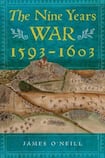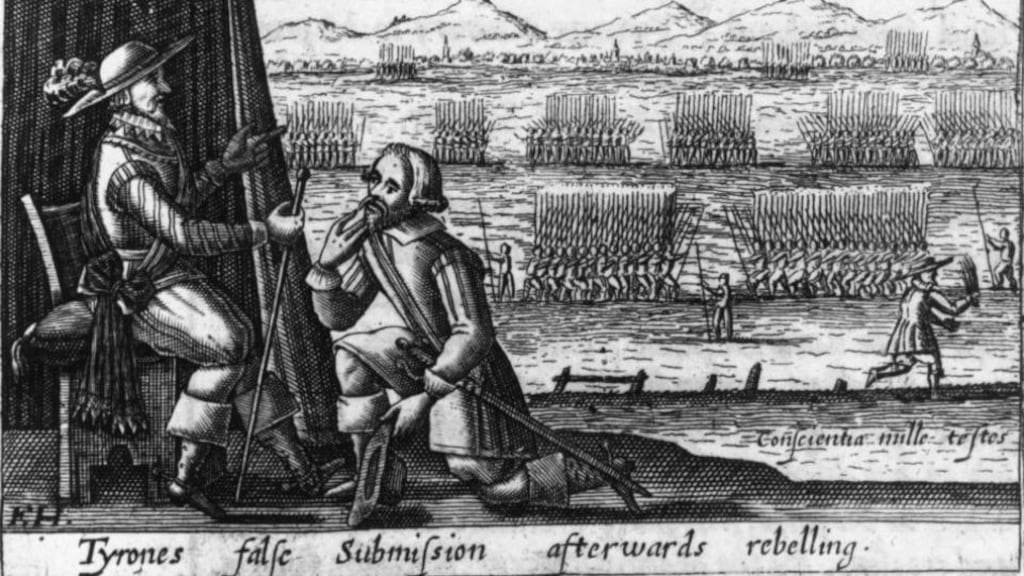
This book centres on the intriguing and historically significant conflict that marked the end of the 16th century and saw the defeat of the bellicose Gaelic Irish lordships of Ulster by the forces of England’s queen Elizabeth. The Nine Years War was a tumultuous and defining period in Irish history as it marked the end of the traditional Gaelic political order, which had ruled Ireland since antiquity and firmly established the control of the English crown and royal government over the whole island.
With the collapse of the Gaelic noble classes, who had dominated Irish political life, culture and economic and social circles for generations, English authority was able to finally permeate through Irish society unchecked, thereby setting in motion the creation of a colonial order that would shape Irish history and in particular Ulster for the next 400 years.
James O’Neill’s study of this conflict and its implications proves increasingly relevant as the contested place of Ulster in Irish, British and European politics once again reasserts itself. In minute and studious detail, it highlights the various dynamics of the period. Special emphasis is given to the English and Irish armies’ conduct as well as their various campaigns and modes of fighting. Irish society and military forces were more than able to match their English counterparts in waging a large-scale conflict. This marked a dramatic change from earlier Anglo-Gaelic conflicts where Gaelic armies were often outgunned by their numerically and materially superior English opponents.
The author highlights how native Irish rulers such as Hugh O’Neill, earl of Tyrone, was able to create a hugely impressive well-armed, expertly led, trained and motivated field army, with a flexible domestic war-economy to match, which frequently outmanoeuvred and overcame English forces. Moreover, enormous research and analysis is given to explaining the course of the conflict, which culminated in the eventual victory of English forces by 1603. This includes examining the various tentative stages of the conflict including early rebel Gaelic Irish Ulster lords’ reasons for going to war with the English Crown in 1593-5, their initial successes over Crown forces, the growth of the conflict outside the boundaries of Ulster as other Gaelic Irish lords capitalised on English difficulties to forcibly pursue their own political agendas with the Crown and the continued political negotiations between Gaelic figures such as Hugh O’Neill and both the English and Spanish Crowns during this period.
Through brute military force, the use of famine and scorched earth tactics and little hindered by lacklustre Spanish forces (culminating in the disastrous defeat of Gaelic forces at the battle of Kinsale in 1601) the English under Lord Deputy Sir Charles Blount and Lord Mountjoy finally managed to secure victory and affirm Crown dominance over not only Ulster but the whole of Ireland by 1603. This in turn ensured English authority over Ireland for centuries to come and laid the groundwork for the plantation of Ulster by Elizabeth’s successor James I with ramifications still felt today.
With such an enormous scope it is fair to say that the author has been able for the most part to produce a detailed if not thoroughly engrossing account, which is well written and accessible to academic audiences but may cause non-academic audiences to flounder.
Laden with fascinating insights and accounts, the result no doubt of extensive research by the author into a period often mired in confusion, given the diverse and often opposing English and Gaelic Irish accounts, the book’s attempt to cover the topic is admirable. The writing can be laborious at times as it is too often overcooked with analysis, leaving too much for the reader to digest and too little to ponder.
The author should perhaps have given greater detail to the political background of 16th-century Ireland, in particular the major Gaelic Irish lordships of Ulster such as their composition, domination of smaller Gaelic magnates such as the O’Hanlons of Orior, internal power structure and internal conflicts of families like the O’Neills and O’Donnells and their relationship with other political figures such as the English government in Dublin and the recently arrived Scottish MacDonnell, who had settled the Antrim Glens in the years leading up to the Nine Years War. This would have explained the internal feuding that erupted in Hugh O’Neill’s Gaelic confederation during the war as seen in the frequent defection of his erstwhile Gaelic allies to Crown forces to escape O’Neill dominance and exactions from their estates.
Another factor that might have made the book more reader friendly would have been a greater focus on the wider political events that not only influenced the course of the conflict but also the events that preceded and followed it, including the conflict between Spain and England in the Netherlands and the succession of James VI of Scotland to the English crown. These events had huge significance on the conflict and would help explain how politicians in England and Spain viewed the conflict in Ireland in terms of their own diplomatic strategy and military efforts.
However, this book offers a truly enlightening account of the breadth and devastation of the conflict as well as the circumstances faced by both politicians and the average person and it does succeed in bringing this formative and fascinating period in Irish history to prominence.










